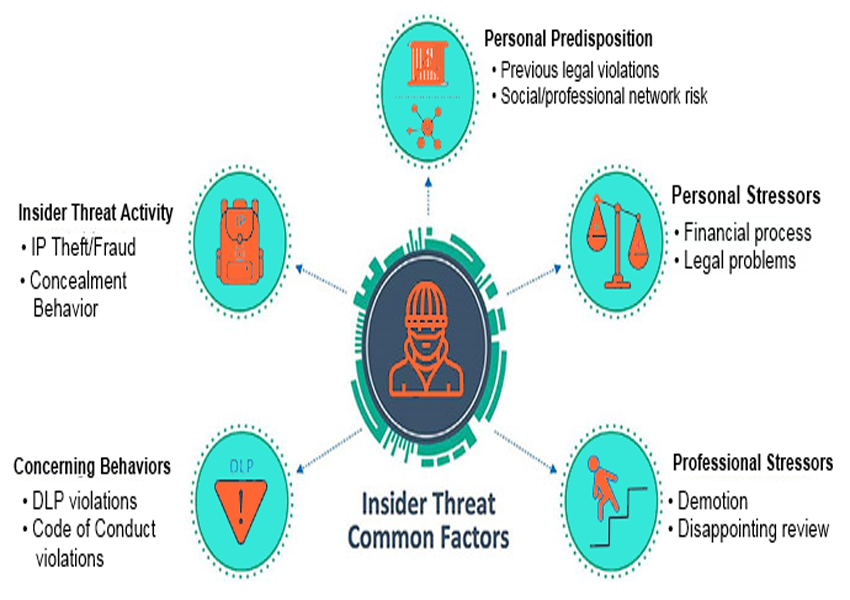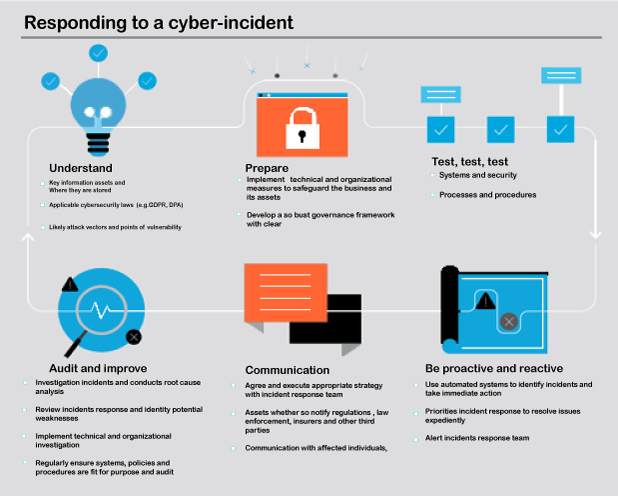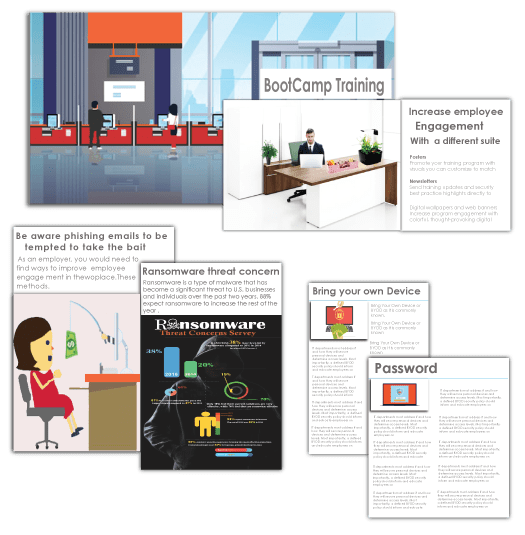Cybersecurity and Managing the Risks

According to Symantec's Internet Security Threat Report from February 2019, online attacks have increased by 56%, with 4,800 websites being penetrated each month due to jacking code. Enterprise ransomware has increased by 12%, while mobile ransomware has increased by 33%. Supply chain attacks have increased by 78%, and the number of people who have received a malicious email – spam, phishing, and malware – has continued to rise throughout 2018. Managing your company's cybersecurity is a never-ending challenge, as new and increasingly sophisticated assaults appear on a near-daily basis. You'll need a cyber security strategy for that. To put your cybersecurity plan into action, you'll need to comprehensively train all employees at all levels on the threats that have been identified.
General Principles for Managing Cyber Risk
The evidence is in the headlines: cybercrime is becoming more dangerous, not only in terms of quantity but also in terms of frequency, spread, and impact. Businesses are feeling the heat, with data breaches ranked as the second most serious danger to their reputation by 39% of organizations. At some time in their lives, all organizations face the prospect of a cyber breach, but knowing your risk level – and where the attacks can originate from – can help you plan an effective response. Cybercrime could be hiding around the corner, whether you're a little firm or a multibillion-dollar multinational.

Why Creating a Cyber Risk Management Plan is Important

A cyber risk management plan serves several functions, including:
• Determining the value of the company’s digital assets
• Assessing the state of the company's cybersecurity
• Identifying and ranking potential cyber hazards
• Creating a disaster plan to follow in case of attack
You'll know how much and which data is vulnerable to cyber threats if you have a clear cyber risk management plan. You'll also get a step-by-step guide for implementing the essential and acceptable cybersecurity safeguards.
The goal is to better safeguard your company's digital data and infrastructure from the most common and expensive cyber threats. Creating a cyber risk management plan will assist you in safeguarding your data.
CyberRisk
Any danger of financial loss, disruption, or damage to an organization's reputation resulting from the failure of its information technology systems is referred to as cyber risk. Cyber risk can manifest itself in a variety of ways, including:
- Intentional and unauthorized security breaches to obtain access to information systems.
- Breach of security that is unintentional or unavoidable.
- Poor system integrity, for example, poses operational IT hazards.
The Different Types of Cyber Risks
- Financial
- Reputational
- Regulatory/Legal

IDENTIFYING CYBER SECURITY RISKS

Your first step should be to do a risk assessment to determine what makes your company appealing to cybercriminals (customer data is likely to be the most valuable commodity at risk) and where your primary weaknesses are located.
Begin by asking yourself some basic questions, such as "What information do we gather?" and "How do we collect it? “How do we keep it?" and "Who has access to it?" Then you should look at how you now protect your data as well as your computers, network, email, and other technologies.
Consider whether you have a formal written policy for social media usage on any device connected to your company network (including personal devices). Do you offer internet security training to your employees? Do you delete all data from old machines before discarding them? Do you require multi-factor authentication to access your network (more than one way of authenticating a user's claimed identity)?
Defining Risk Management
FAIR defines risk management as "the combination of people, policies, processes, and technology that enables an organization to achieve and maintain a cost-effective level of loss exposure." The following are some of the most important points to remember from this definition:
• Efficiently: It is the responsibility of mature risk professionals to not only assist their employers in risk management but to do it in a cost-effective manner as well. Organizations compete on a variety of levels, and one wins on that level if it can manage risk more cost-effectively than its competitors.
• Achieving and Maintaining Goals: Achieving a goal implies that there is one. The ability to quantify and compare is necessary for maintaining a risk objective over time.
• An Acceptable Level of Loss Exposure: Using a risk assessment framework, pre-determined checklists, and a set of standard practices is an example of implicit risk management, but it will not help you achieve a certain acceptable level of risk. One or more quantitative risk-based objectives must exist in order to explicitly manage risk.

Building the Right Foundation

Five aspects form the foundation for achieving and maintaining successful risk management.
• Cost-effective risk management: a program that satisfies the above-mentioned definition of risk management.
• Well-informed decisions: every decision has a choice, and in order for those choices to be well-informed, they must be well-informed.
• Effective comparisons: A decision-maker must be able to weigh the pros and cons of the various options available.
• Useful metrics: quantitative financial measurements that all stakeholders may comprehend.
• Accurate models: accurate risk and explicit risk management models that can scale in real-world scenarios.
The Open FAIR technique was created with the goal of providing relevant measures that would allow management to make successful comparisons and well-informed decisions. For cybersecurity and operational risk, FAIR has become the only international standard Value at Risk (VaR) model.
Implementing an Effective Risk Management System
According to FAIR, an efficient risk management system includes the following components:
• Risk: is a function of the risks, assets, controls, and impact variables (such as legislation) that influence loss exposure.
• Risk Management: entails making decisions and carrying them out. Those choices are related to the risk governance strategy that the company chooses to employ. What a company actually gets in terms of risk is a function of how those decisions are carried out.
• Feedback Loop: information on asset-level controls, threat intelligence, and losses, as well as metrics on factors that affect execution (e.g., awareness, capabilities) and root-cause analysis.

We are looking forward
to hearing about your
project!
Boost Engagement with delivering Communication Tools

Increase employee engagement with a different suite of communication tools like:
Posters
Promote your training program with visuals you can customize to brand... more
Newsletters
Send training updates and security best practice highlights directly... more
Digital wallpapers and web banners
Increase program engagement with colorful thought-provoking messaging... more
Training Videos/Animations
Strengthen key awareness concepts and skills through stylish visual... more
Why Aspire Tech
Award-winning courses
Aspire's award-winning online courses and programs are created and delivered by a renowned Cyber Security specialist.
The perfect fit for business
Plans for small to large businesses that are flexible to match your budget. There is a volume discount available.
Cost effective training
For a fraction of the expense of traditional classroom training, train thousands of employees in numerous locations.